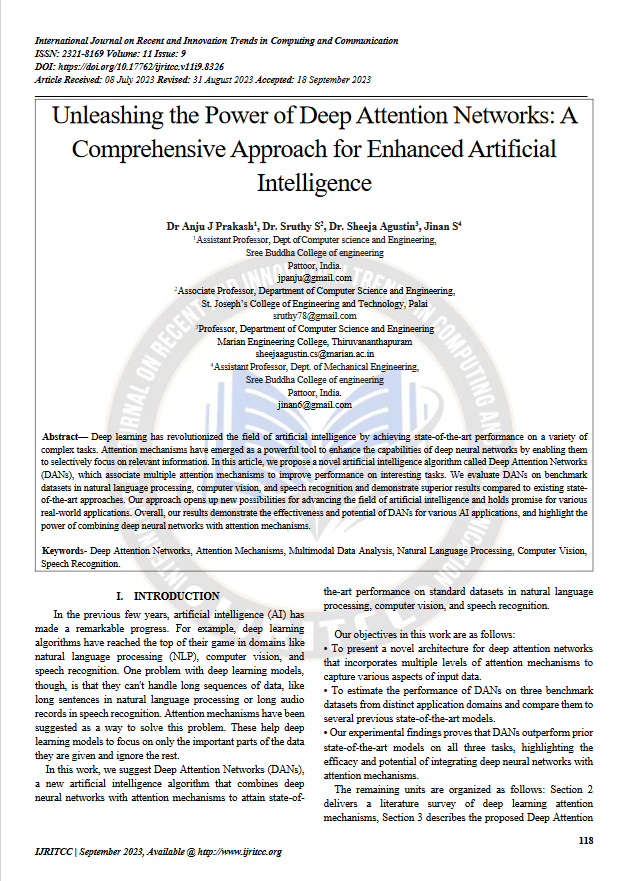Unleashing the Power of Deep Attention Networks: A Comprehensive Approach for Enhanced Artificial Intelligence
Main Article Content
Abstract
Deep learning has revolutionized the field of artificial intelligence by achieving state-of-the-art performance on a variety of complex tasks. Attention mechanisms have emerged as a powerful tool to enhance the capabilities of deep neural networks by enabling them to selectively focus on relevant information. In this article, we propose a novel artificial intelligence algorithm called Deep Attention Networks (DANs), which associate multiple attention mechanisms to improve performance on interesting tasks. We evaluate DANs on benchmark datasets in natural language processing, computer vision, and speech recognition and demonstrate superior results compared to existing state-of-the-art approaches. Our approach opens up new possibilities for advancing the field of artificial intelligence and holds promise for various real-world applications. Overall, our results demonstrate the effectiveness and potential of DANs for various AI applications, and highlight the power of combining deep neural networks with attention mechanisms.
Article Details
References
Bahdanau, D., Cho, K., & Bengio, Y. (2015). Neural machine translation by jointly learning to align and translate. arXiv preprint arXiv:1409.0473.
Chan, W., Jaitly, N., Le, Q. V., & Vinyals, O. (2016). Listen, attend and spell: A neural network for large vocabulary conversational speech recognition. In Acoustics, Speech and Signal Processing (ICASSP), 2016 IEEE International Conference on (pp. 4960-4964). IEEE.
Dai, Z., Yang, Z., Yang, Y., Carbonell, J. G., Le, Q. V., & Salakhutdinov, R. (2019). Transformer-xl: Attentive language models beyond a fixed-length context.
Lin, T. Y., Dollár, P., Girshick, R. B., He, K., Hariharan, B., & Belongie, S. J. (2017). Feature pyramid networks for object detection. In CVPR (Vol. 1, No. 2, p. 3).
Panayotov, V., Chen, G., Povey, D., & Khudanpur, S. (2015). Librispeech: An ASR corpus based on public domain audio books. In Acoustics, Speech and Signal Processing (ICASSP), 2015 IEEE International Conference on (pp. 5206-5210). IEEE.
Socher, R., Perelygin, A., Wu, J. Y., Chuang, J., Manning, C. D., Ng, A. Y., & Potts(2013). Recursive Deep Models for Semantic Compositionality Over a Sentiment TreeBank, ICEMNLP,IEEE.

